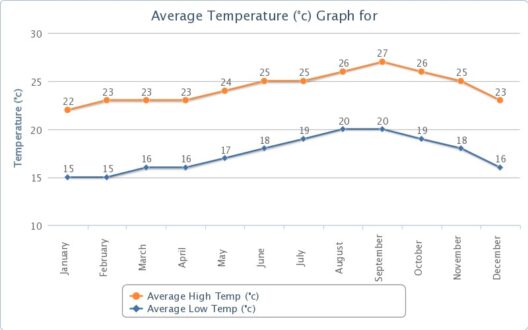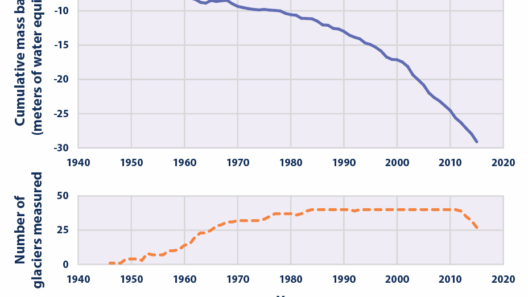The intricate ballet of the water cycle—often depicted with simplicity in educational settings—holds profound implications for our understanding of climate change. The water cycle, also known as the hydrological cycle, encompasses a series of processes through which water moves from the surface of the Earth to the atmosphere and back again. This cycle involves various stages: evaporation, condensation, precipitation, infiltration, and runoff. Each component of this cycle is deeply interconnected with climatic conditions, making it an essential aspect when considering the larger context of global climate change.
At its most basic, the water cycle begins with the evaporation of water from oceans, rivers, and lakes. Heat from the sun accelerates the transformation of surface water into vapor, which rises into the atmosphere. This process not only cools the water bodies but also plays a pivotal role in regulating temperature across the planet. As water vapor ascends, it cools and begins to condense into tiny droplets, forming clouds. This condensation is pivotal; it contributes to the greenhouse effect, where water vapor acts as a natural blanket, trapping heat in the atmosphere. Increased evaporation rates—amplified by rising air temperatures—lead to higher levels of moisture in the atmosphere, intensifying the greenhouse effect and exacerbating global warming.
After condensation, various meteorological conditions dictate the next phase: precipitation. Rain, snow, sleet, and hail are manifestations of the water cycle returning moisture to the Earth’s surface. This aspect is not merely a local phenomenon; it is influenced by larger climatic systems. Changes in global temperatures shift rainfall patterns, causing some regions to experience heavy downpours and flooding while others may suffer prolonged droughts. Such disparities in precipitation patterns can disrupt ecosystems, agriculture, and water supplies, magnifying societal vulnerabilities.
The infiltration of water into the soil and the subsequent runoff into rivers and oceans are vital processes that maintain the balance of freshwater ecosystems. Water not only supports flora and fauna, but the quality and distribution of this water can be critically altered by climate change. For instance, higher temperatures can increase evaporation rates, reducing available freshwater. Moreover, excessive runoff can lead to eutrophication—an over-enrichment of water bodies with nutrients—causing algae blooms that deplete oxygen levels in aquatic environments, negatively impacting marine biodiversity.
Another crucial element to consider is the melting of glaciers and polar ice caps. As global warming persists, the ice that has accumulated over millennia is rapidly diminishing. This not only contributes to rising sea levels—posing existential threats to coastal communities—but also transforms local hydrodynamics. Glacial meltwater feeds rivers and lakes during dry seasons; as glaciers recede, this vital lifeline is compromised. The implications for agriculture, particularly in regions dependent on seasonal meltwater, are significant, potentially leading to food scarcity.
The oceans serve as both a supplier of water vapor and a climate regulator through currents and heat distribution. Ocean temperatures play a crucial role in weather patterns, shaping everything from monsoons to hurricane activity. Warmer oceans can intensify hurricane strength and frequency, leading to more devastating storms that wreak havoc on human life and infrastructure. Additionally, oceans absorb a substantial portion of atmospheric carbon dioxide, which leads to ocean acidification—a major threat to marine life and coral reefs. The degradation of these ecosystems further disrupts the food web and diminishes biodiversity.
Climate change also introduces variability in regional climates, affecting the predictability of the water cycle. Some areas may see increased frequency of extreme weather events, while others may experience unnaturally persistent dry spells. This variability can strain water resources, foster conflict over increasingly scarce supplies, and challenge traditional agricultural practices. It is imperative for communities to adapt, employing innovative water management strategies that promote resilience. Techniques such as rainwater harvesting, greywater reuse, and responsible irrigation practices can mitigate the impacts of water scarcity brought about by changing climatic conditions.
While the water cycle is a natural phenomenon, human activities play a destabilizing role. Urbanization, deforestation, and pollution have all exacerbated the adverse effects tied to the water cycle. For instance, the impervious surfaces created by urban development inhibit proper infiltration, increasing runoff and contaminating watersheds. This cycle of degradation not only threatens freshwater supplies but also elevates the risk of flooding and water quality deterioration.
Technological advancements offer a glimmer of hope in addressing the interconnected challenges posed by climate change and the water cycle. Innovations in remote sensing and predictive modeling can enhance our understanding of how climate change impacts precipitation patterns and water availability. Furthermore, investment in sustainable practices, comprising ecosystems restoration and conservation, can help to repair the delicate balance of the water cycle. Protecting wetlands, reforesting degraded areas, and promoting sustainable agriculture help to ensure the integrity of this cycle and its capacity to support life on Earth.
The water cycle embodies the delicate interplay between atmospheric climates and oceanic dynamics. Understanding its mechanics offers invaluable insights into the broader implications of climate change and emphasizes our collective responsibility to advocate for sustainable practices. As global temperatures rise and precipitation patterns shift, it is essential to recognize how these changes affect not only our immediate environments but also holistic planetary health. By fostering awareness, promoting sustainable water use, and respecting ecological boundaries, we can work towards a more balanced future where the vital processes of the water cycle continue to sustain life.






